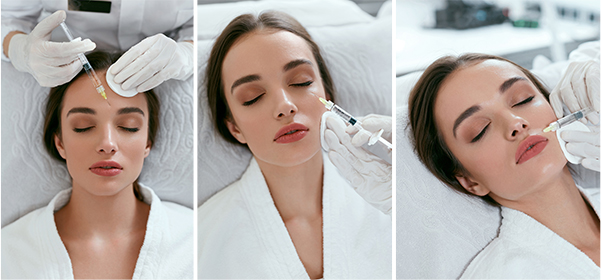EYE CARE IN IRAN
The operation to restore youth to a worn-out pair of pillows!
The operation to restore youth to a worn-out pair of pillows!

If your eyes are bags of sadness and your eyelids are worn around like an old party hat, you need Blepharoplasty. The blepharoplasty surgery is an operation that involves cutting and re-shaping the eyelids. The surgery corrects any defects, deformities or disfigurations in the lids; while at the same time changing the way you look.
What is Blepharoplasty
An eyelid lift, or blepharoplasty, is a procedure to remove skin and to add or remove fat from the eyelids. The term “eyelid lift” is a misnomer because the eyelid is not truly lifted during surgery.
Upper blepharoplasty surgery uses incisions to allow for removal of skin and fat. A thin stitch is then used to bring the skin together to allow for a creation of an eyelid crease.
Lower eyelid surgery can involve skin incisions directly below the lash line or an incision on the inside of the eyelid, called a transconjunctival approach. The transconjunctival approach allows for access to the eyelid without visible incisions, making this technique perfect for patients who need fat removed or added. This approach can be combined with laser resurfacing of the eyelid skin to reduce lines and wrinkles.


Rhinoplasty commonly referred to as a “nose job,” is one of the most common types of plastic surgery. Popular with celebrities and models, rhinoplasty changes the shape and proportions of your nose and enhances your facial harmony.However, it can be quite costly. Fortunately, due to medical tourism, you can get a nose job at the fraction of the cost in foreign countries.

Preparation
Before getting a nose job in Iran, you must consult with a surgeon to kick around important factors and determine your candidacy for the procedure. You’ll discuss what you want to improve about your body and your overall health. Be specific. Talk to your surgeon about what you’d like to change about yourself as well as why you think surgery is an appropriate solution. Your surgeon is also likely to take a series of photographs of your nose from different angles and then manipulate them with a computer imaging program in order to show you what the surgery can do.
During The Surgery
The first step to getting a nose job is deciding which type of rhinoplasty is right for you. In general, there are two main approaches to surgical rhinoplasty:
Your doctor will review the differences between open and closed surgery with you to determine which will work best for your circumstances.
The rhinoplasty surgery can take place in the hospital or outpatient surgery center. It is performed either under local anesthesia with sedation or general anesthesia, depending on the complexity of your surgery and your doctor’s preference.
Once you’re unconscious or under sedation, your surgeon will make cuts inside or between your nostrils. They will then separate your skin from the cartilage or bone and start reshaping. The operation procedure generally takes 1 to 2 hours. Sometimes depending on the complexity of the operation, it can take up to 3 hours.
Recovery
After surgery, your doctor may place a plastic or metal splint on your nose. The splint will help your nose retain its new shape while it heals.
Once the surgery is complete, you may be instructed to wear a plastic or metal splint on your nose for up to a week. This is done so as to help your nose retain its new shape and heal properly.
You’ll be monitored in a recovery room for at least a few hours after surgery and if everything is okay, you’ll be able to leave the same day. In some cases, you might have to stay in the hospital for one night.
You may have a few side effects and complications for a short while after the surgery. These include soreness, swelling, bruising – particularly around your eyes, and headaches. Your face will also feel puffy, and your doctor might prescribe pain medication and nose spray.
After surgery, you might experience drainage, excess fluid that leaks from the surgical site. A drip pad can be used to absorb the drainage. Your nurse or doctor will tell you how often to change your drip pad.
Your doctor will tell you not to do a variety of activities after your surgery. You’ll need to avoid the following for a few weeks:
For most people, the typical recovery time following nose surgery is about 6 weeks. Most patients can return to work after 1-2 weeks, depending on activity level, orthodontic care, and occupation.
Please select a valid form
